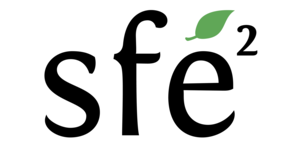Invasive species are non-native organisms that, when introduced to new environments, can cause significant harm to the ecosystem, economy, or human health. Unlike native species, they lack natural predators or controls in their new environments, allowing them to spread rapidly and outcompete local flora and fauna. This can lead to drastic changes in ecosystem structure and function. Invasive species often outcompete native species for resources such as food, space, and light, leading to declines or even extinctions of native species. They can alter habitats, making them unsuitable for native species to survive. Studying invasive species helps ecologists understand how ecosystems function and the roles different species play within them. This knowledge is crucial for maintaining healthy ecosystems and biodiversity. Scientific data on invasive species inform policymakers and help in drafting effective legislation to control their introduction and spread. However, collecting ecological data on native species is often troublesome and time consuming. In this context, population genetics can play a crucial role allowing to estimate ecological parameters such relatedness and dispersal with little time effort.
Several invasive species are known in France. Among them, the Pallas’s squirrel (Callosciurus erythraeus) was introduced around the 1960’s (Chapuis et al. 2012). Classified as an invasive species of concern since 2016, the French Ministry of Ecology, the Muséum National d’Histoire Naturelle (MNHN), and the Office Français de la Biodiversité (OFB), have set up a Plan National de Lutte (PNL) against it. Today, C. erythraeus is successfully established in two southern regions: Antibes and Istres which correspond to two independent introductions.
RESEARCH PROPOSAL/OBJECTIVES:
Population genetics may help to estimate ecological parameters which can inform local authorities to better manage C. erythraeus. In particular, we will use a genomic dataset (see below) to estimate:
– Relatedness between sampled individuals. This will allow to understand the fine scale population structure and the capacity of dispersal of this species in the new environment
– Local density using theory developed for spatially continuous population genetic models
– the date of the invasion and the strength of the founder effect using historical demographic modelling
DESCRIPTION OF DATA if applicable (Data must be available before the start of the internship):
Data consist of high coverage double digest RAD (ddRAD) sequencing (Peterson et al. 2012) of 196 geo-referenced individuals sampled in the Antibes region. ddRAD belong to the reduced representation library (RRL) family, very useful when i) working on non-model species (for which a reference genome is not available) and ii) a large sample size is needed.
METHODOLOGIES:
Before starting population genetics analyses, bioinformatics approaches will be used to treat the fastq files produced after the sequencing of the ddRAD libraries. Several pipelines exist todays (with their pros and cons), here we will follow the approaches implemented in STACKS 2.5. STACKS will be used to select the best combination of assembly parameters and to produce a cleaned (filtered) dataset of bi-allelic markers for downstream analyses. Population genetics analyses will be organized in three tasks:
Task 1. Relatedness. Several estimators of relatedness have been proposed in the last years. Here we will first evaluate relatedness using the one of Queller and Goodnight (1989) but a comparison with other estimator will be warranted (depending on time availability) to assess the robustness of the results.
Task 2: Local density estimation. The geographic coordinates will be used to compute the geographic distances between the sampled individuals (under the R environment) using two approaches: i) simple geodesic distances; ii) least cost distances including through a raster map specific environmental features which may promote (or hamper) dispersal. These distances will be then compared to the between individual genetic differentiation. The correlation between the two matrices will lead to an estimation of the local density under a continuous lattice individual based model (Rousset 2001). To this end, an external information concerning dispersal ability is needed, as the regression proposed by Rousset (2001) can only estimate the product between density and dispersal. Dispersal ability data will be available by the long-term monitoring program and completed by the relatedness analysis performed in Task 1.
Task 3: Timing and strength of the founder effect. We will compute the folded site frequency spectrum (SFS), i.e., the frequency distribution of each bi-allelic markers in the sampled individuals. This will allow the reconstruction of the historical variation of the effective population size through time (Liu and Fu 2020) and, potentially, identify the time when colonization of Antibes first occurred and the approximate number of founder individuals.
REFERENCES (max. 5):
– Chapuis, J.-L., Dozières, A. & Pisanu, B. (2012) Les écureuils en France. https://ecureuils.mnhn.fr, Muséum national d’histoire naturelle, Paris.
– Liu, X., Fu, YX. (2020) Stairway Plot 2: demographic history inference with folded SNP frequency spectra. Genome Biol 21, 280. (https://doi.org/10.1186/s13059-020-02196-9)
– Peterson, B. K., Weber, J. N., Kay, E. H., Fisher, H. S., & Hoekstra, H. E. (2012) Double digest RADseq: An inexpensive method for de novo SNP discovery and genotyping in model and non-model species. PLoS One, 7(5), e37135.
– Queller D.C., Goodnight K.F. (1989) Estimating relatedness using genetic markers. Evolution 43:258–275. (https://doi.org/10.1111/j.1558-5646.1989.tb04226.x)
– Rousset F. (2000) Genetic differentiation between individuals. Journal of Evolutionary Biology 13:58-62.

Commentaires récents